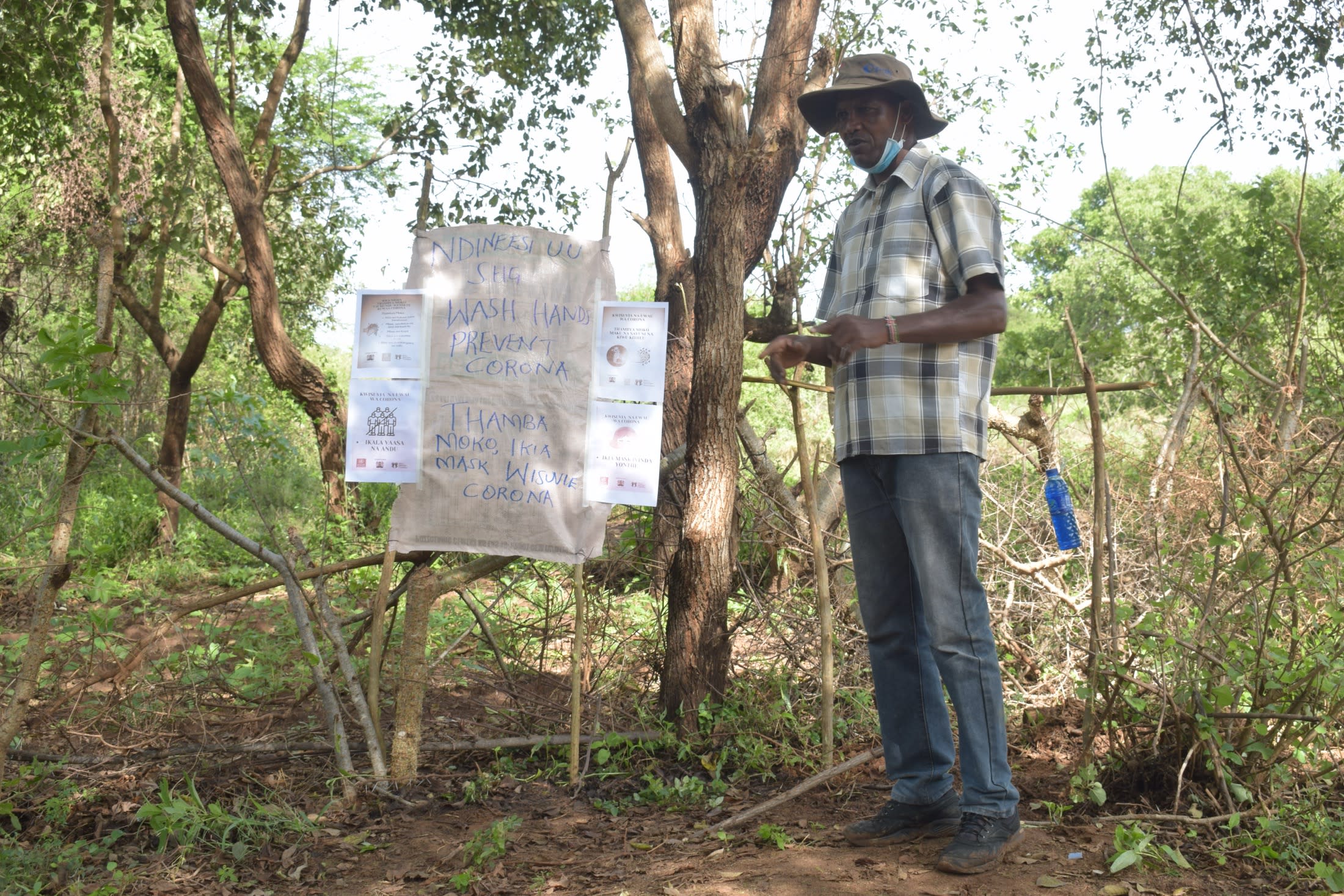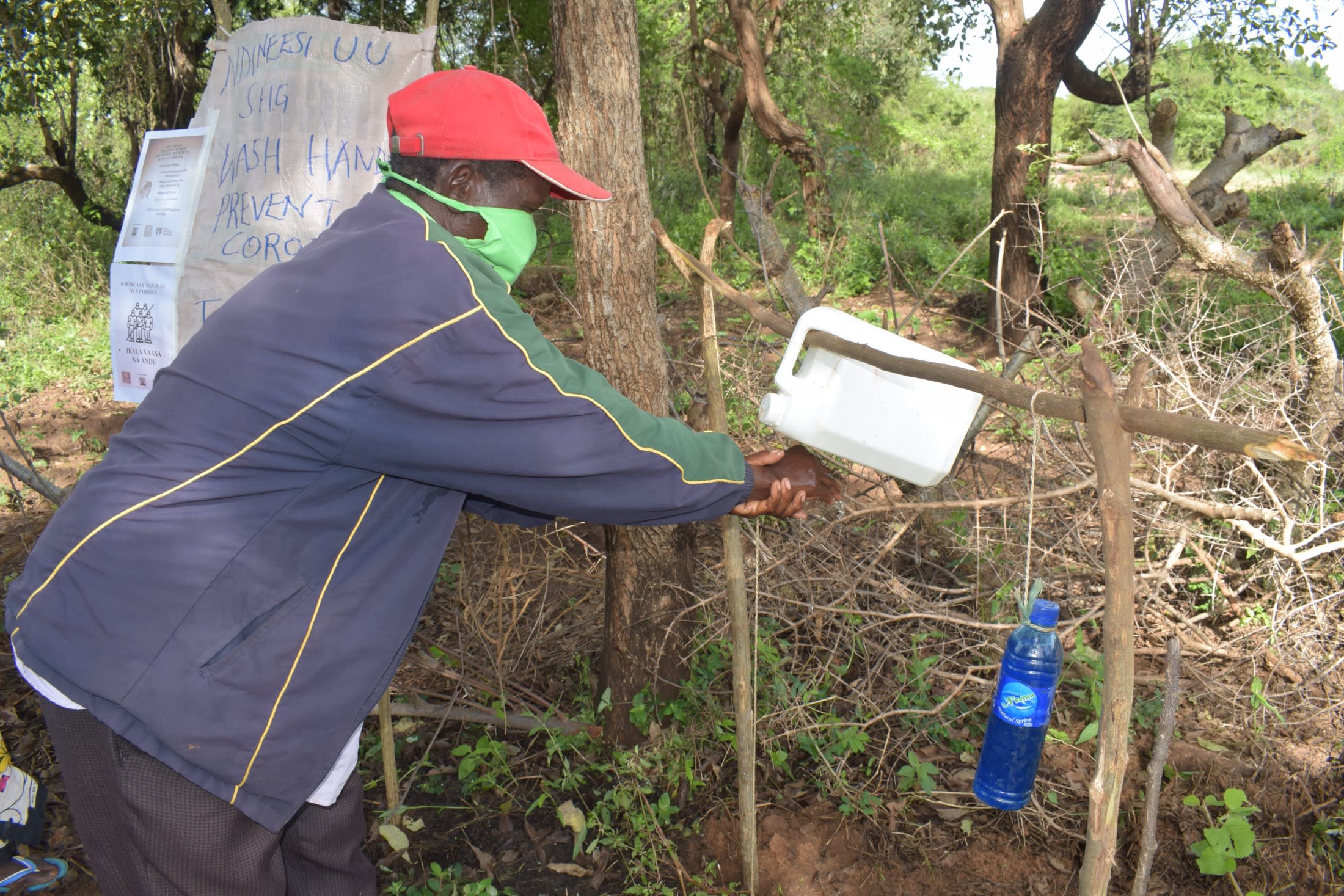Unpredictable rainfall patterns can't guarantee water for communities, like Katuluni Village, all year round. Most rivers in the entire county are seasonal. Sand dams harvest rainwater where it falls and make it available to the community through the next rainy season, providing water for households, livestock, and income-generating activities.
This is the second dam and hand pump for the community, having worked with them last year. It is a part of a long-term partnership between The Water Project, ASDF and community members to ensure access to safe water all year. Click here to see the projects they built in nearby Ikulya Community last year.
Water
The Ndineesi Uu Self-Help Group dug a well in this community last year, but it can only serve 500 people out of more than 2,000. That means that many people still have to go to other open sources to collect water. Some members of the group still walk for long distances to access the water point.
Water in this region is most often collected from open scoop holes in sandy, seasonal rivers using 20-liter plastic jerrycans. The water is then loaded onto donkeys or some carry it on their backs. The majority of drinking water is then stored in high capacity plastic containers, but it is generally untreated for contaminants.
Sanitation
Roughly two-thirds of community members have latrines. The latrines exhibited average levels of cleanliness. Some were made of permanent and semi-permanent structures, chances are high that some latrines have been affected by the ongoing rains leading to their sinking or fall.
The group members are showing commendable strides in use of the information from the sanitation and hygiene training, like tippy taps and garbage pits. This can be attributed to a positive mindset among the community members willing to embrace constructive ideas.
Community
Katuluni is more than 300km away from ASDF's offices in Mtito Andei. We traveled to the site by car with the majority of the roads up to Mwingi Town being tarmacked. We had to camp in town for several days due to the distance to the project area so as to cover many projects within the area.
The community group is found on a silent rural village which is largely dry except during the rain seasons. The area has limited tree coverage with a charcoal burning menace affecting the area which has led to many trees being sacrificed for charcoal trade. Majority of households had decent houses made of bricks and covered with iron sheets, However, there also cases of households living in grass thatched mud houses.
Marginalization by successive government regimes has led to low levels of development in the area with no medical facilities and access roads. Cases of illnesses have led to many deaths as the area lacks a health facility and the poor roads lead to delays in emergency responses for ailing community members.
A typical day starts at 6am. The children prepare for and go to school. After that, livestock are either taken for grazing or tethered in the bush. The husband and wife are free to engage in the main income generating activities, farming, casual labor, etc., for the rest of the day.
What we plan to do about it:
Our main entry point into Katuluni Community has been the Ndineesi Uu Self-Help Group, which is comprised of 39 farming households that are working together to address water and food scarcity in their region. These members will be our hands and feet in both constructing water projects and spreading the message of good hygiene and sanitation to everyone.
Training
We’re going to continue training Katuluni Community on hygiene and sanitation practices. Though our visits to households were encouraging, we want to ensure that community members are practicing the day to day habits we’re not able to observe. Food hygiene, water hygiene and treatment, personal hygiene and handwashing will all be a focus during our next review.
Sand Dam
Building this sand dam at a spot further down the river will bring water closer to hundreds of other people. After the community picked the spot, our technical team went in and proved the viability by finding a good foundation of bedrock. Now, our engineers are busy drawing up the blueprints. We estimate the dam will be 31 meters long and 2.8 meters high.
We are unified with this community to address the water shortage. As more sand dams are built, the environment will continue to transform. As the sand dams mature and build up more sand, the water tables will rise. Along with these sand dams, hand-dug wells (check out the hand-dug well being installed next to this dam) will be installed to give locals a good, safe way to access that water.
With these projects, clean water will be brought closer to hundreds living around Katuluni.
This project is a part of our shared program with Africa Sand Dam Foundation. Our team is pleased to provide the reports for this project (edited for readability) thanks to the hard work of our friends in Kenya.

 Sand Dam
Sand Dam
 Rehabilitation Project
Rehabilitation Project






































